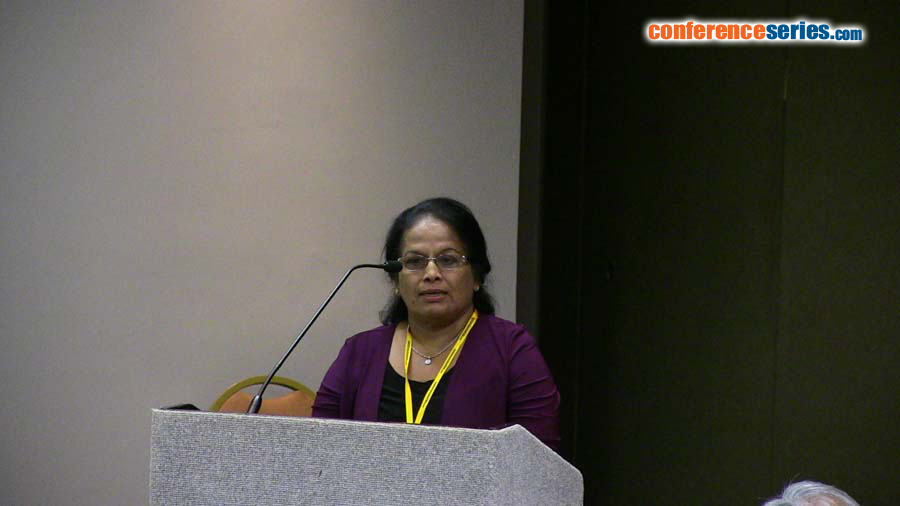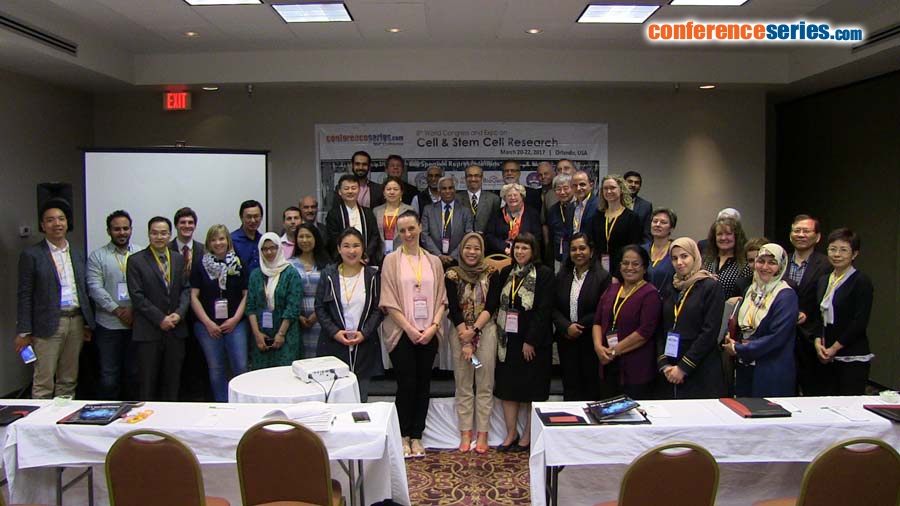
Meenakshi Chellaiah
University of Maryland Dental School, USA
Title: Identification of Expression of Putative Cancer Stem Cell Markers in Prostate Cancer
Biography
Biography: Meenakshi Chellaiah
Abstract
Advanced prostate cancer (PCa) is androgen-independent. Studies revealed that tumor–initiating cells negative for androgen receptor (AR-) and p63, express the markers for cancer stem cells (CSCs). Recent studies indicate the involvement of stem cell markers (CD44, α2β1, CD133, NANOG, SOX2 and OCT4) in the maintenance of CSCs and relapse of the disease. A unique prostate stem cell biomarker has not yet been found. Our goal here is to characterize PCa cell lines derived from different metastases and tissue microarray (TMA) sections for CSC markers. We used PCa cell lines derived from lymph node (LNCaP), brain (DU145) and bone (PC3) metastases along with control cell lines (HPR1 and BPH1). Loss of AR activates CD44 expression in PC3 and DU145 cells. CD44 expression is negligible in AR positive (AR+) LNCaP cells. Only a sub population (<5%) of PC3 cells were CD44+/ CD133+. Of all the cell lines tested, the combined expression of CD44 and CD133 was greater in PC3 than DU145 cells. CD133+ PC3 cells were enriched by sequential antibody selection using DYNA beads. As compared with PC3 cells, CD44+/CD133+ enriched PC3 cells are integrin α2β1(+), Integrin αvβ3(-) and highly migratory in nature. Immunohistochemistry analyses of TMA sections demonstrated the expression of CD133 in a few island of cells (~1-2%) within the lumen filled with tumor cells (Stage III and IV) and in basal luminal cells. When comparing the expression levels of other stemness factor such as NANOG, SOX2 and OCT4 in PCa cells indicated above, only SOX2 expression was considerably higher at mRNA level which corresponds with an increased protein levels in PC3 cells. Knockdown of SOX2 not only reduces in vitro migration but also the expression of EMT regulatory proteins (Slug and Snail) in PC3 cells. Existence of sub-populations of CSCs [CD133+, CD44+, and integrin α2β1(+)] in bone metastatic PC3 cells and in the malignant prostatic tissue (CD44+, CD133+) suggest that they may cause PCa relapse and failure of many treatment practices. Furthermore, expression of SOX2 and CD133 in PC3 cells appears unique. These proteins may be involved in the maintenance of CSCs in bone microenvironment and could be used as a prognostic marker to detect bone metastatic spread. Further elucidation of the SOX2 target genes and inhibition of the function of SOX2 and its target gene may be useful in the manipulation of cancer progression in/at-risk of men.




